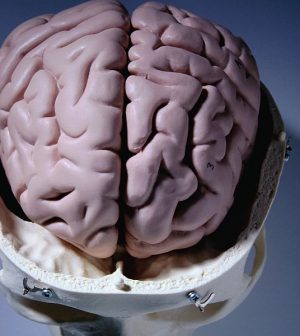- Understanding the Connection Between Anxiety and Depression
- How Daily Prunes Can Influence Cholesterol and Inflammation
- When to Take B12 for Better Absorption and Energy
- Epsom Salts: Health Benefits and Uses
- See What Saffron Can Do for Sleep and Heart Health
- 6 Common Mistakes to Avoid Before Your Physical
- Can Sweating Really Help You Beat a Cold?
- Strengthening Your Relationship: Practical Strategies
- Skip Storing This Everyday Product in the Fridge Door
- Green Tea + B3 Pairing May Boost Brain Health
Could AI Beat Radiologists at Spotting Bleeds in the Brain?

Computer-driven artificial intelligence (AI) can help protect human brains from the damage wrought by stroke, a new report suggests.
A computer program trained to look for bleeding in the brain outperformed two of four certified radiologists, finding abnormalities in brain scans quickly and efficiently, the researchers reported.
“This AI can evaluate the whole head in one second,” said senior researcher Dr. Esther Yuh, an associate professor of radiology at the University of California, San Francisco. “We trained it to be very, very good at looking for the kind of tiny abnormalities that radiologists look for.”
Stroke doctors often say that “time is brain,” meaning that every second’s delay in treating a stroke results in more brain cells dying and the patient becoming further incapacitated.
Yuh and her colleagues hope that AI programmed to find trouble spots in a brain will be able to significantly cut down treatment time for stroke patients.
“Instead of having a delay of 20 to 30 minutes for a radiologist to turn around a CT scan for interpretation, the computer can read it in a second,” Yuh said.
Stroke is the fifth-leading cause of death in the United States, and is a leading cause of disability, according to the American Stroke Association.
There are two types of strokes: ones caused by burst blood vessels in the brain (hemorrhagic), and others that occur when a blood vessel becomes blocked (ischemic).
Yuh’s AI still needs to be tested in clinical trials and approved by the U.S. Food and Drug Administration, but other programs are already helping doctors speed up stroke treatment, said Dr. Christopher Kellner. He is director of the Intracerebral Hemorrhage Program at Mount Sinai, in New York City.
“We are already using AI-driven software to automatically inform us when certain CAT scan findings occur,” he said. “It’s already become, in just the last year, an essential part of our stroke work-up.”
An AI created by a company called Viz.ai is being used at Mount Sinai to detect blood clots that have caused a stroke by blocking the flow of blood to the brain, Kellner said.
Yuh and her team used a library of nearly 4,440 CT scans to train their AI to look for brain bleeding.
These scans are not easy to read, she said. They are low-contrast black-and-white images full of visual “noise.”
“It takes a lot of training to be able to read these — doctors train for years to be able to read these correctly,” Yuh said.
Her team trained its algorithm to the point that it could trace detailed outlines of abnormalities it found, demonstrating their location in a 3-D model of the brain being scanned.
They then tested the algorithm against four board-certified radiologists, using a series of 200 randomly selected head CT scans.
The AI slightly outperformed two radiologists, and slightly underperformed against the other two, Yuh said.
The AI found some small abnormalities that the experts missed. It also provided detailed information that doctors would need to determine the best treatment.
The computer program also provided this information with an acceptable level of false positives, Yuh said. That would minimize how much time doctors would need to spend reviewing its results.
Yuh suspects radiologists always will be needed to double-check the AI, but Kellner isn’t so sure.
“There will definitely be a point where there’s no human involved in the evaluation of the scans, and I think that’s not too far off, honestly,” he said. “I think, ultimately, a computer will be able to scan that faster and send out an alert faster than a human can.”
The new study was published Oct. 21 in the Proceedings of the National Academy of Sciences.
More information
The American Stroke Association has more about stroke.
Source: HealthDay
Copyright © 2026 HealthDay. All rights reserved.










